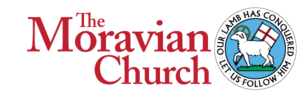Representatives from more than 20 rural and urban parishes attended a workshop on parish finances at All Saints’ Cathedral on January 18.
Hosted by the Rev. John Gee, diocesan treasurer, the training day provided an opportunity for people involved in parish financial management to come together to share ideas and resources.
Put simply, the role of parish treasurer, an invaluable member of vestry, is to assist church wardens in the handling of offerings and contributions, and to keep the parish accounts. But, as John Gee observed, a treasurer should be well versed in areas such as methods of receiving and receipting for donations and accounting methods.
Gee shared a few best practices for parish treasurers’, such as keeping personal information secure, backing up data regularly and reconciling the parish account once a month, ensuring expense payouts are authorised by two people, never signing a blank cheque and ensuring one trusted person in addition to yourself has access to the parish account. He also noted that each parish is responsible for appointing an accounts examiner, a financially knowledgeable volunteer who is not directly involved with parish financial administration, to review the financial statements before the parish annual general meeting.
Parishes are required to submit a monthly remittance to the diocese by the 20th of each month as payroll goes out on the 28th. Should an issue with finances arise, such as a budget deficit, it is the parish’s responsibility to inform the diocese immediately. The Parish Remittance Form and items pertaining to parish finances including the Treasurer’s Handbook can all be found in the Treasurer’s Toolbox on the diocesan website.
Parishes should note that there are legal requirements for handling “restricted” donations designated for a specific purpose. While not complying with a donation’s restriction is a criminal breach, parishes do have a right to refuse a donation if they do not agree with the conditions. Parishe should also note the deadline for filing a T3010 Charitable Information Return is June 30.
With many things to keep track of, Margaret Glidden, diocesan communications director, told workshop participants about possible time-saving measures such as online giving and Pre-authorised Giving (PAG). Noting a trend toward online giving, she said 20.5 per cent of charitable donations are made online (Canadahelps.org). To make it easier for people to give when they don’t carry cash, parishes can provide a “click and give” option on their website’s home page. Through a new partnership between church website provider Ascend and online giving provider Tithe.ly, parishes of the Edmonton diocese can register for a free account and be eligible for a lower transaction fee. Donors have the option of a one-time contribution or monthly giving. Parishes can contact Margaret at the Synod Office for the registration link.
Additionally, parishes with an Ascend or Tithe.ly website are eligible for a lower monthly hosting and technical support fee which includes access to digital communication tools, such as e-newsletters, sermon podcasting and online event registration.
Toby Ramsden, chair of the diocesan administration and finance (A&F) committee and people’s warden for St. John the Evangelist in Edmonton, presented on yet another potential time and cost saving measure, a cloud-based accounting system. Storing financial data in the cloud, which can then be accessed electronically via wifi from anywhere in the world, improves efficiency and accuracy, he said. Cloud-based bookkeeping can generate accurate and up-to-the-minute reporting. Authorised users can use a program like QuickBooks to retrieve bank statements electronically and download the data into the user’s program in a matter of minutes. Using an app like Receipt Bank users can input utility bills and expense receipts directly. The WayPay app then enables users to make payments electronically, thus eliminating the need for cheques which are quickly becoming obsolete. The process can be set up to require authorization by two people. Email Toby Ramsden for more information on cloud-based accounting: tobyramsden@gmail.com .
In addition to keeping track of parish finances, treasurers have the responsibility of presenting financial information in a format others will understand, said Alan Perry. He noted that traditional line-by-line budgets are useful for showing the amount of money coming in and how much is being spent. Canonical requirements for a parish financial plan are that it includes revenue and expenditure, apportionment, salary and benefits, debt payments (if any) and operational expenses (Canon 5.111). A parish must submit its budget to the diocese within 14 days of adoption and by the March 15 deadline.
Signs of a healthy parish, said Perry, include: income revenue which is comprised of 80 per cent giving; giving that is growing year by year (at least at the rate of inflation); 50 per cent of giving from Pre-authorised Giving (PAG); starting the year with a surplus; having enough to get through the lean summer months (or not having lean summer months); ending the year with a small surplus (or a large one). On the other hand, signs for concern may include: dependence on fundraising, investment income or rental income (greater than 20 per cent of income), year-end panic appeals, frequent or chronic deficits, shrinking reserves, and/or “deferred maintenance.”
But what does parish giving and spending say about our mission priorities? Perry shared how narrative budgets are useful tools for painting a broader picture of parish life and good works and supporting the parish stewardship program.
“You don’t budget expenditures so you can pay the bills,” he said. “You budget expenditures so you can fund your parish mission.”
He outlined the process for creating a narrative budget which begins with grouping budget items into categories, such as ministry, worship, pastoral care, Christian education, fellowship, community outreach, etc, then determining what percentage of the budget is allocated to each focus area. It is important to refresh categories and recalculate allocations every year. The next step is to invite parishioners to share experiences which can be woven into short stories for each category.
He also encouraged parishes to consider various ways to package and present a narrative budget, whether it be included in an AGM report, presented as a PowerPoint slideshow, or displayed as a YouTube video on the parish website.
“Be sure to enlist the help of creative parishioners with a knack for storytelling and include lots of colourful photos. As with everything else, narrative budgets get better with practice,” he said.





















